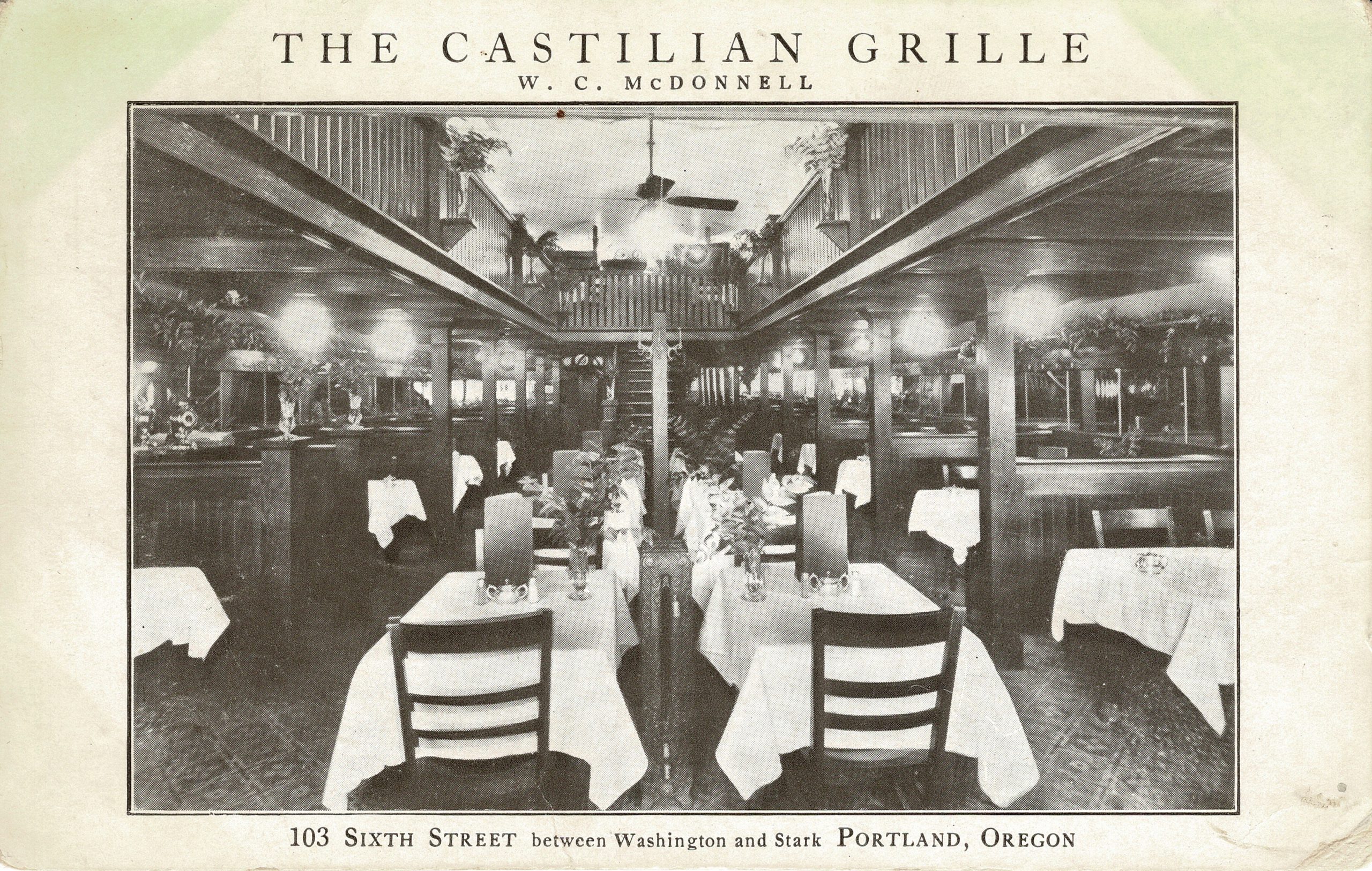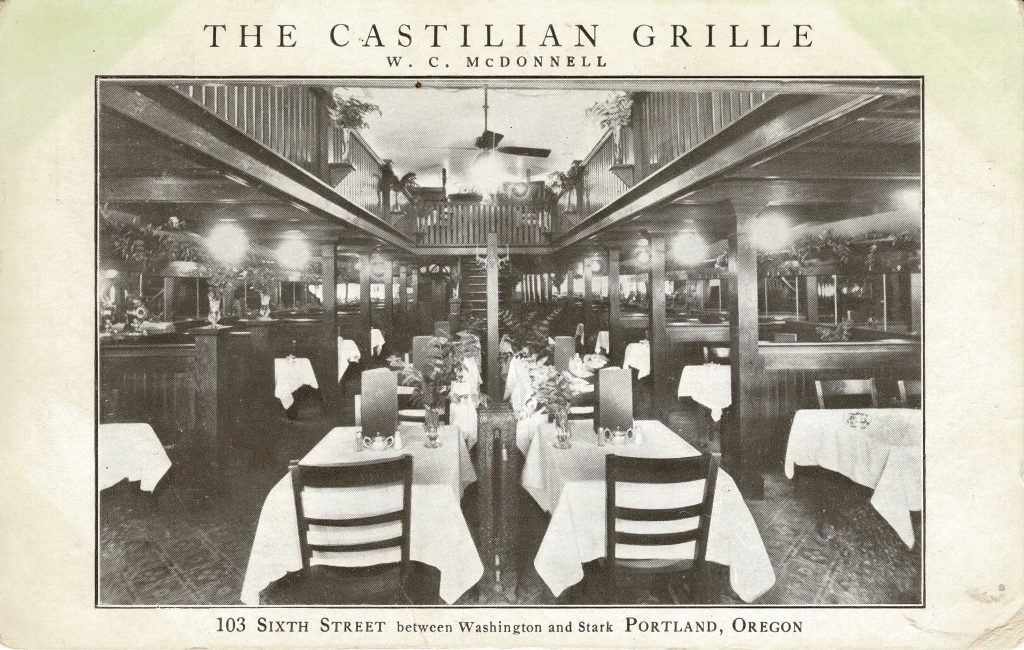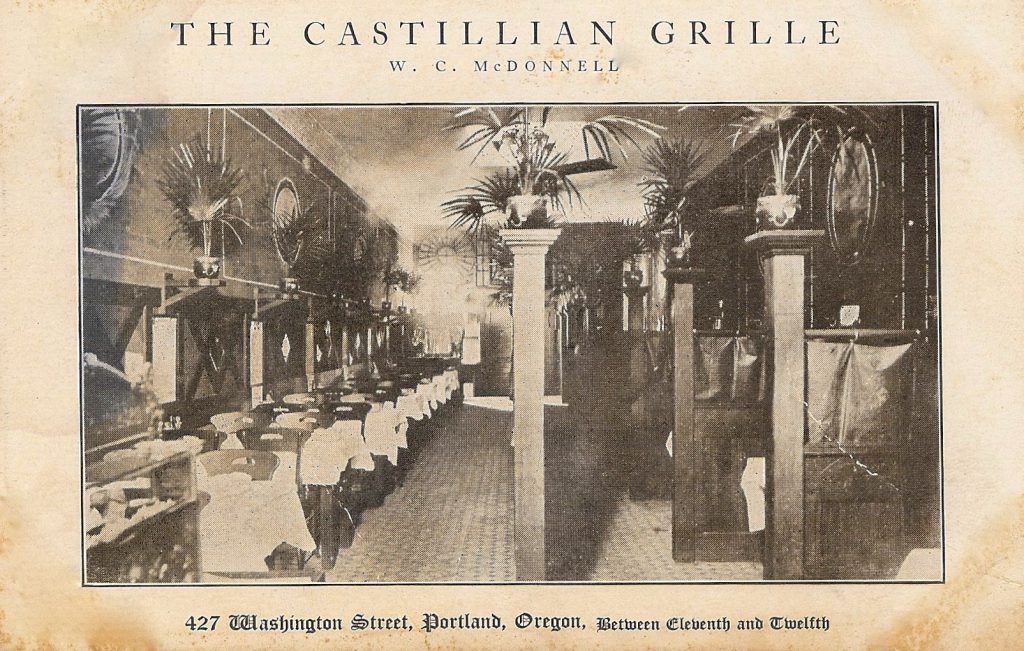An Outpost of Castile


Mailed to Ralph Blair in Stella, Washington, from Portland, April 17, 1911
We’ve written before on fusion food offerings of the early twentieth century in the Pacific Northwest. Here’s another example, this one a little less chaotic than the Spanish-Mexican-Italian-Chinese-French-Texan-Aztec menu of Cook’s Tamale Grotto.
 |
| A postcard from about 1912 |
The Castillian Grill first appears in the Portland Oregonian in an advertisement on December 27, 1908: “Spanish cooking—for men and women. Regular Spanish dinner, 4 to 8 P.M., 50c. 427 Wash. st.,” between SW 11th and 12th. Restaurateur W. C. McDonnell first shows up in the Polk city directories running another establishment in Portland from 1909, and as the manager of the Castilian in 1912 and 1913. The Polk directory also notes, “Spanish and Mexican cooking, chicken tamales and Spanish pot pies a specialty.”
Misfortune seems to have struck under McDonnell’s auspices, as the restaurant underwent a bankruptcy sale on August 15, 1912; the receiver was an agent of Weinhard’s Brewery. At the time, the Castillian had two locations, the one on Washington and another on SW 6th Avenue near Stark Street.
The Castillian Grill apparently weathered its bankruptcy, although its location changed again, to SW Morrison near 11th in 1913. Later it was adjacent to the Perkins Hotel, which was at SW 5th and Washington. The Oregonian describes a minor fire in the Perkins Hotel basement on the evening of May 1, 1917, when smoke drove both hotel guests and “waitresses, cooks and diners” from the Castillian into the street; it’s the last mention of the restaurant to be found in the newspaper.
 |
| From a postcard |
The brief menu on the postcard suggests an emphasis on Mexican dishes, with at least a few eponymous nods to native Aztec roots and some references to Spain—and let’s not forget the spaghetti. Probably there was Weinhard’s beer to wash it down. A postcard dated 1911 advises that the Castilian offers “American, Spanish, French Cooking, Wines and Liquors.”
Who were the customers of the Castilian? Where did they source their ingredients? And their cooks? Was this an exotic destination, or a watering hole with novel food on the side? It’s worth noting that the 50-cent dinner of 1908 is roughly equivalent to $13.00 today, which suggests it wasn’t a cheap dive, nor was it a swanky place. In any case, it certainly was an unusual eatery for its time and place.